
Introducing Google Rich Snippets:
You are uniquely knowledgeable about the content on your web pages as a site owner. The “snippet” shows users a brief sample of your content so that they can better understand what they will see when they click through to your site. Google uses a variety of techniques to construct these snippets and give users relevant information about what they will find when they click through. Google is introducing today Rich Snippets for highlighting structured data embedded in web pages using Google’s algorithms.
Summary information about search results is conveniently summarized in Rich Snippets to make searching easier. Review information and personal information are currently supported. The product and service reviews and ratings are easily available when users search for them, and when they search for a person, they can distinguish between people with the same name.
In google’s experience, it may seem like a simple change to the way search results are displayed, but users seem to find the new information useful. If they see useful and relevant information on the page, they are more likely to click through. Google’s goal now is to open up this successful experiment to more websites so that they can participate. Your site can benefit from structured data annotated with a standard format by annotating your pages.
In most cases, this is as simple as wrapping existing data on your web pages with additional tags so that Rich Snippets can display. Microformats and RDFa have commonly used markup formats.
What are Google Snippets?

With Rich Snippets, additional information is displayed alongside the title, description, and URL, adding value to the search results visually. The extra information is derived from structured data on the page. There are certain types of rich snippets that only appear on pages with certain types of information, further limited by the type of device.
Rich snippets Vs. Rich results:
The highlighted box is a snippet of content that has been extracted from a page. Position 0 usually appears above the first organic listing. For the specific query, the page should already rank among the Top 10. Industry-specific types are not assigned. Most sites can provide useful information or accurate data that answers a relevant query.
In addition to content analysis – technical and on-page aspects are taken into account. They can increase CTR but may also provide users with enough information in SERPs without the need to click.
Located in the SERPs, enhanced with an additional visual element or interactive element.
A high ranking is not a prerequisite to acquiring a rich result. Many types work only for specific content or websites (Recipe, Local Pack, Critic Review, Product).
These results are based on structured data pulled from the page. They increase the CTR as access to targeted results is enhanced.
How do Rich Snippets help Improve SEO?
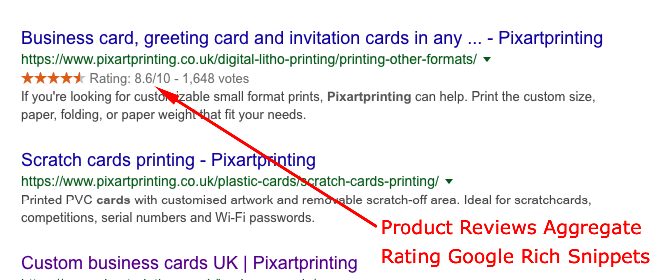
Rich snippets are essentially enhanced search results. For years, Google has been experimenting with how they display their search results: images, videos, or even snippets of the content itself, all to enhance the browsing experience. Rich snippets help you make your web pages look more enticing in the search results by making them look more interesting. Ranking high in search results is great, but ultimately what makes people click through is the content of the snippet.
One of the most exciting features of that first snippet is how it makes full use of the product schema markup. Having the most reviews and displaying the price, establishes trust and entices the click.
Other elements to consider in determining the SERP include prices, reviews, ratings, and cooking times. More space is provided for you to create clickbait with information that matters. People might be more likely to click on a product that ranks second but is cheaper than the first
Simplified google terms explained:
- Rich snippets: Search results that include additional information with the title, snippet description, and URL.
- Rich results: Search results that include structured data as well as visually enhanced information. Rich snippets are a type of rich result.
- SERP features Everything that isn’t a conventional “blue link” search result. All of these types of SERP features include featured snippets, PPC ads, tweet boxes, and Knowledge Panels.
How to get rich snippets for SEO?
Structured data is used by rich snippets to create rich snippets based on content. Designed to make it easy for Google to understand and use, the data is formatted and organized in such a way that it can easily be used for SERPs and for other purposes.
Google crawls your page and translates the structured data markup on your content into the different types of rich snippets described above. Structured data markup must be included in the source code on your page of content in order to get a rich snippet to appear on a SERP.
How To Add Markup For Rich Snippets?

There are two parts to structured data:
- Structured data vocabularies such as Schema, Open Graph, and Twitter cards help search engines interpret entities to form structured data results.
- JSON-LD is Google’s preferred format and is becoming more widely used. Other commonly used formats include microdata and RDFa. There are three main formats: JSON-LD, microdata, and RDFa.
Structured data can be added directly into the code on the page if you are comfortable tweaking basic code. You don’t have to be a coder to take part. All you need is a little reading and experimenting.
You can generate markup code for page elements using Google’s Structured Data Markup Helper. While we are aware that the code isn’t always as clean as it should be. The generated code is a good starting point, but it’s important to review it before applying it to your page.
How to get rich snippets on Rankmath?
1. Enabling Schema from Global Options
Let’s start at the beginning. You must first activate the Schema module from the settings after you have already installed and configured Rank Math on your website.
To do that, head over to Rank Math > Dashboard.
And make sure that the Schema (Structured Data) module is enabled.
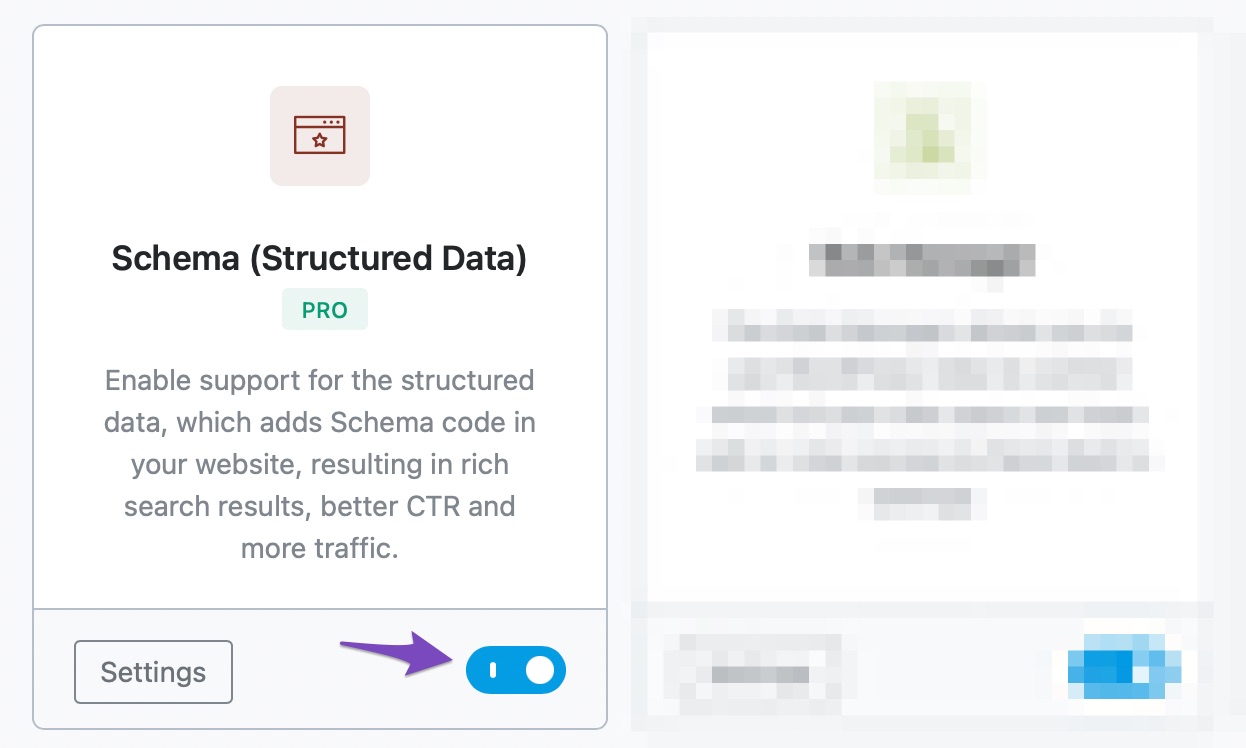
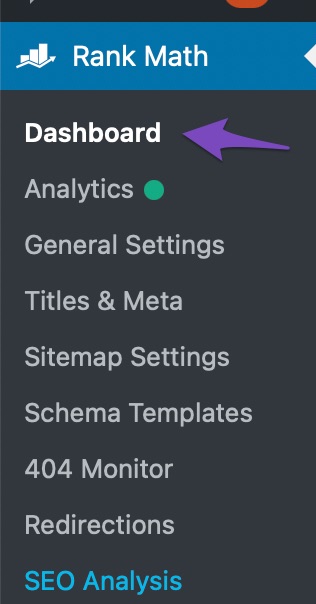
2. Setting up Default Schema for Your Website
Considering how critical the Schema is to modern search engine optimization, every post and page on your website should contain at least a Schema or structured data. As with all posts and pages on your site, you can define a default Schema type with Rank Math. These options can be found underneath the Settings tab.
Head over to Rank Math > Titles and Meta.
You will reach Rank Math’s Title and Meta settings. On the page that appears, click the Posts option from the left tab menu.
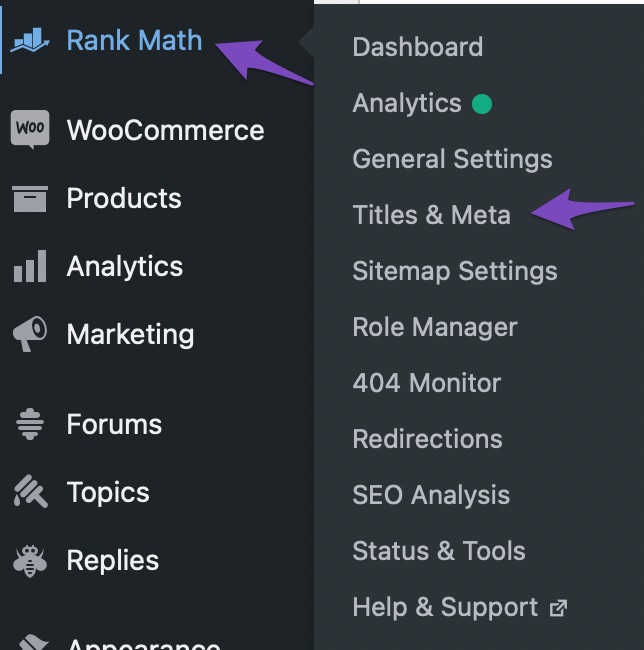
On the page, scroll a bit to find the Schema Type option.
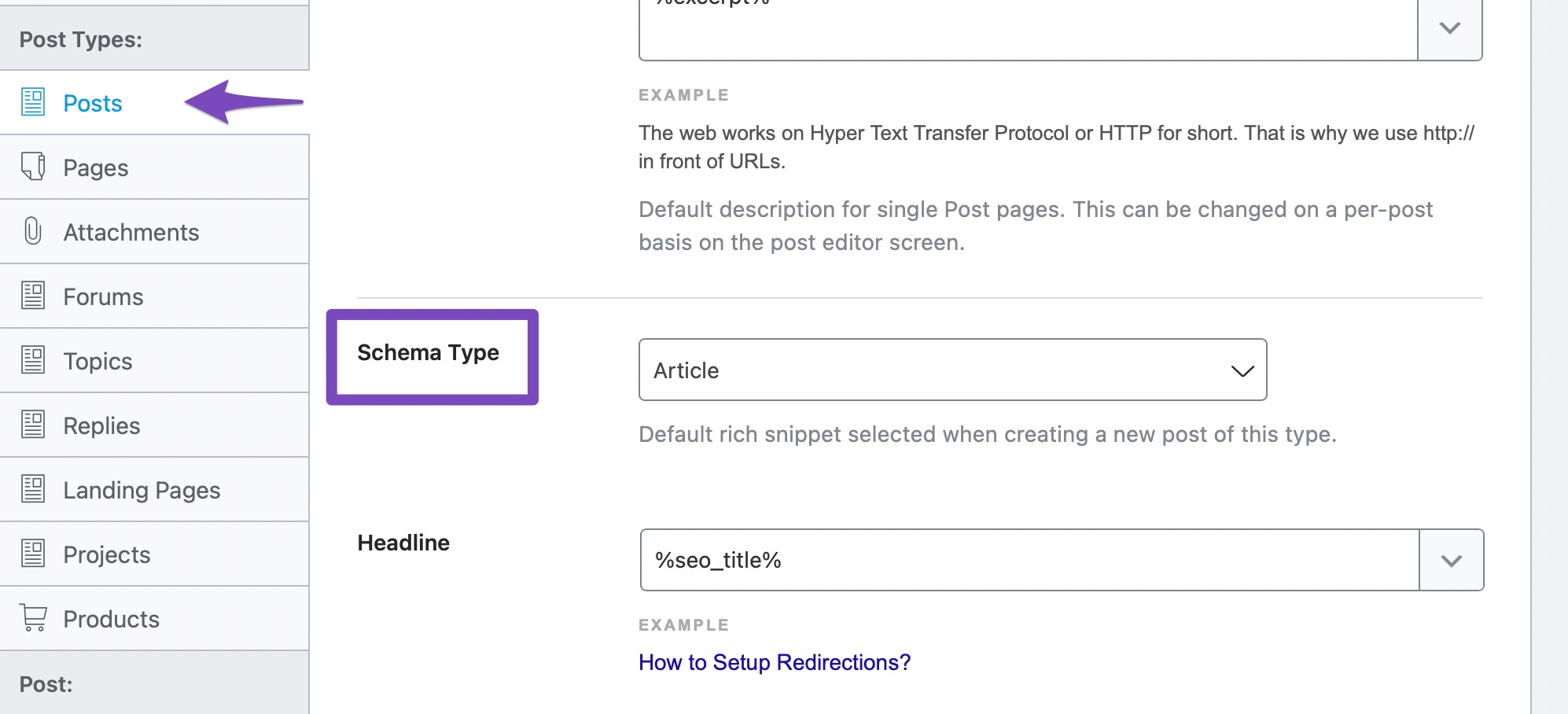
To see all the Schema Types supported, click the drop-down menu. You can then scroll or search for all the different Schema types supported by Rank Math.
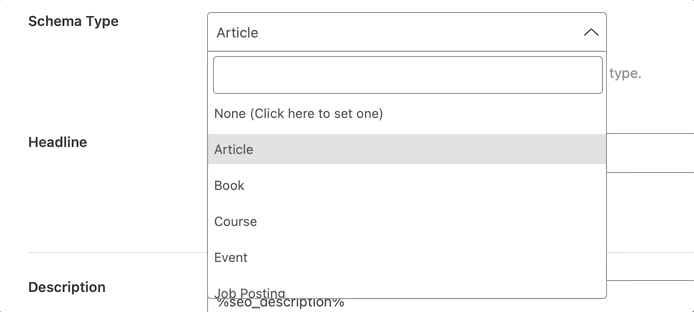
Select the Schema type that you use the most on your website, and save your settings.
You can repeat this process for all of your pages after saving. Additionally, if your site offers custom post types, they will appear in the menu. This should be done for all post types.
Since we have not added any Schema to any of our posts thus far, we have only selected the default Schema type that will be applied to each page, and we can further customize each page or post as needed.
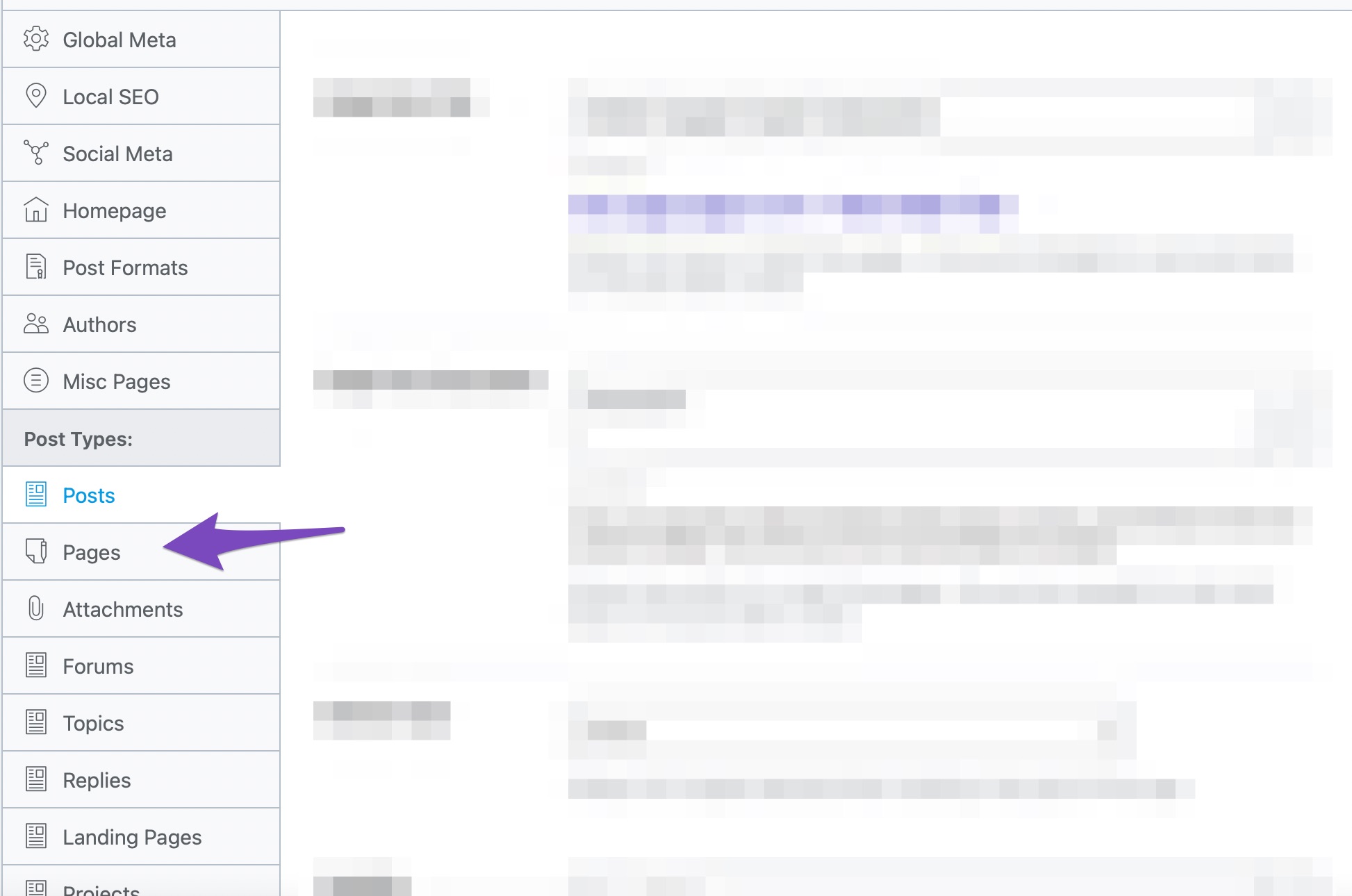
3. Adding Schema on Posts and Pages
We have selected a default Schema type for adding to your pages. Now, we can go ahead and add or customize the Schema that will be added to our posts.
To demonstrate, we will create a new post by going to Posts > Add New.
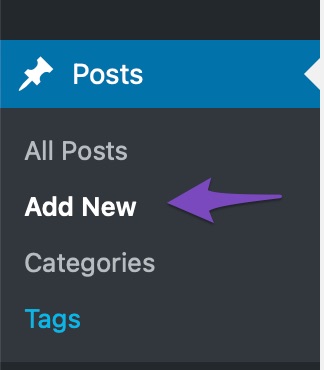
We’ll then give our post a title and add some dummy text to it. Then, we’ll open up Rank Math by clicking the Rank Math icon on the WordPress menu.
Once the Rank Math menu is open, we’ll open the Schema Tab by clicking the icon from the menu.

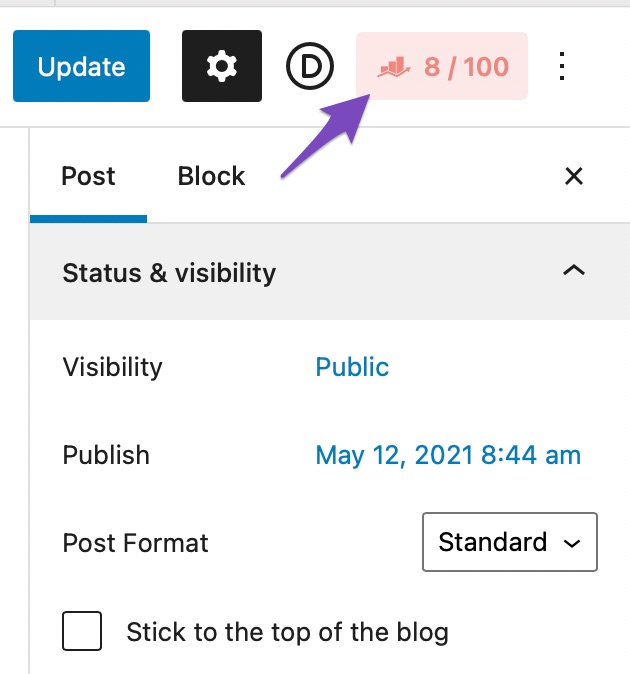
It looks like this when the Schema Generator is complete. As you may recall, we set up a default Schema type (Article) above, which is the reason it is displayed here. You would see this one here if you selected a different Schema type as default.
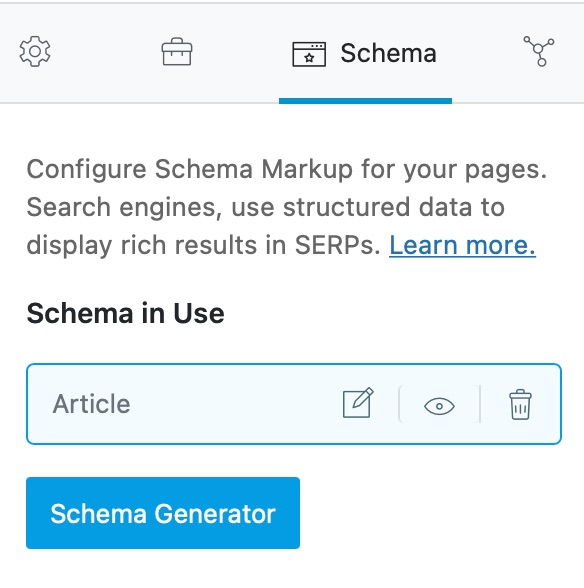
Since we will cover adding all kinds of Schema, we will delete the existing Schema by clicking the delete icon next to the Schema and clicking Yes on the confirmation dialog.
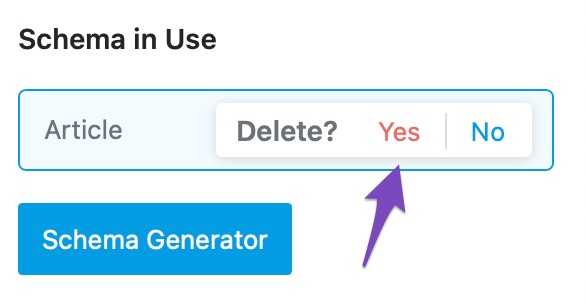
Now we’ll start with a blank slate. Let us add a brand new Schema by clicking the Schema Generator button.
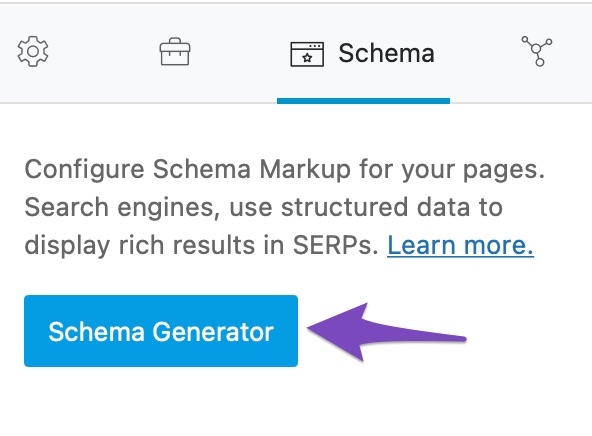
It is possible that you will not see some of the features in the free version of Rank Math. The free version will not offer those features. If you’re curious to see how the FREE and PRO versions compare, here’s a screenshot.
The Custom Schema tab is visible in the free version, but it is inactive. Upon accessing it, Rank Math PRO is prompted for an upgrade.
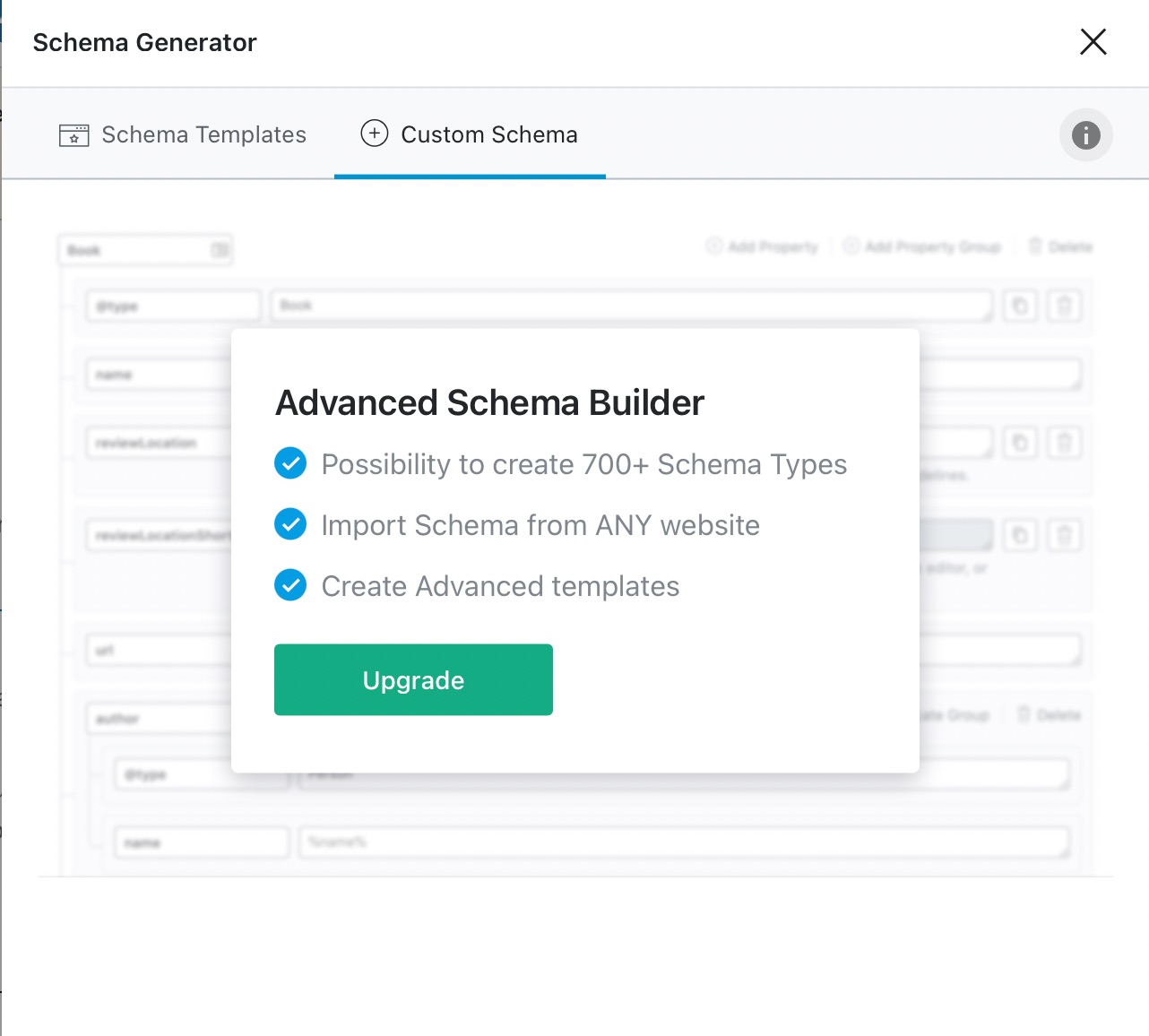
Summary
Search results provide rich snippets to quickly answer a user’s question based on information found on a webpage. Pages that have been indexed by Google are automatically used for featured snippet content. Tables, lists, and definitions are the most common featured snippet types. Currently, video snippets are limited to two lines under 200 characters, and the thumbnail also limits their size. The newly-added snippet character limit will override any automatically-updated metadata like that, which will display a shortened description.




